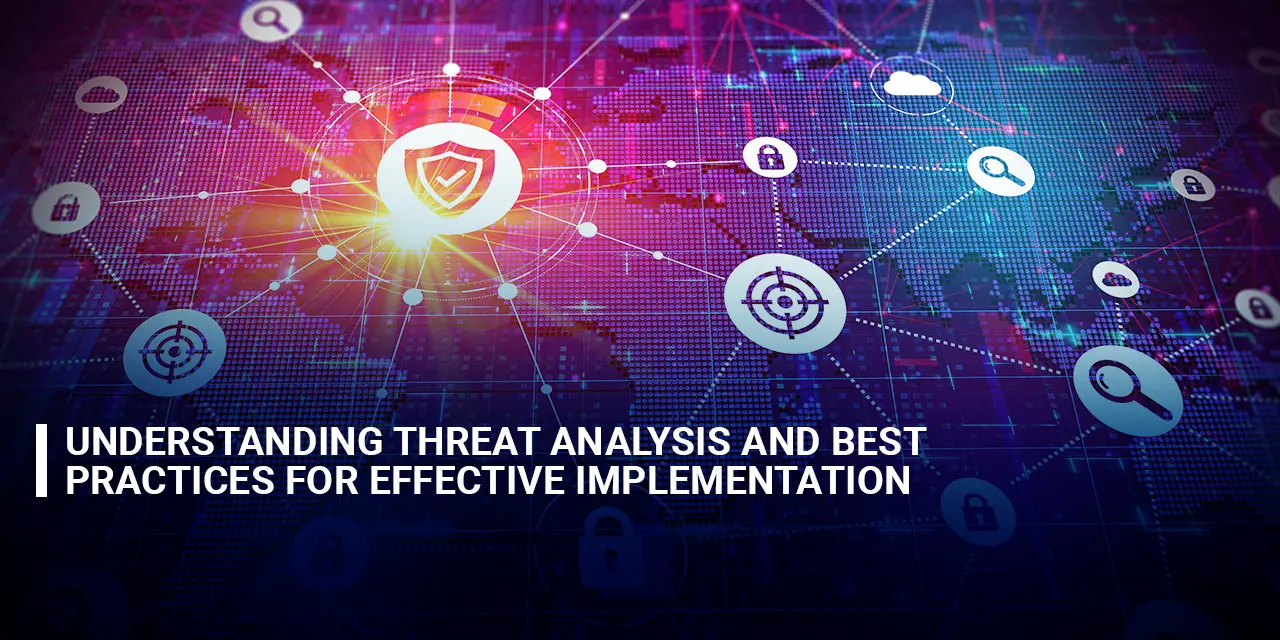Research
Share Knowledge
Brainstorm Ideas
-
What is Threat Analysis?
Threat analysis is the systematic process of identifying, assessing, and prioritizing threats to an organization’s assets. These assets can include data, infrastructure, intellectual property, and human resources. The primary aim of threat analysis is to understand the potential risks, evaluate their impact and likelihood, and develop strategies to mitigate them.
-
Importance of Threat Analysis
1. Proactive Risk Management
Conducting threat analysis allows organizations to proactively identify and mitigate risks before they materialize. This proactive approach helps prevent incidents that could cause significant damage, saving time, money, and reputation.
2. Asset Protection
Effective threat analysis safeguards critical assets by identifying vulnerabilities and implementing protective measures. Whether it’s data security, network integrity, or intellectual property protection, understanding the threats ensures better security planning.
3. Regulatory Compliance
Many industries are governed by strict regulatory requirements that mandate robust security measures. Threat analysis helps ensure compliance with these regulations, avoiding potential fines, legal issues, and damage to reputation.
4. Informed Decision-Making
With a clear understanding of the threat landscape, organizations can make informed decisions regarding resource allocation, security investments, and strategic planning. This ensures that resources are used efficiently and effectively.
-
Steps in Conducting Threat Analysis
1. Identify Assets
The first step in threat analysis is to identify and categorize the assets that need protection. This includes tangible assets like servers and networks, as well as intangible assets like data, intellectual property, and brand reputation.
2. Identify Threats
Identify potential threats that could exploit vulnerabilities in these assets. Threats can be external (e.g., cyberattacks, natural disasters) or internal (e.g., insider threats, human error).
3. Assess Vulnerabilities
Evaluate the existing vulnerabilities within your organization’s assets. This involves identifying weaknesses that could be exploited by threats to gain unauthorized access or cause damage.
4. Evaluate Threat Impact
Assess the potential impact of each identified threat. Consider factors such as financial loss, operational disruption, reputational damage, and legal consequences.
5. Determine Likelihood
Estimate the likelihood of each threat occurring. Use historical data, industry trends, and threat intelligence reports to gauge the probability of each threat materializing.
6. Prioritize Threats
Based on the impact and likelihood assessments, prioritize threats to determine which ones require immediate attention. This prioritization helps in allocating resources efficiently.
7. Develop Mitigation Strategies
For high-priority threats, develop and implement mitigation strategies. These can include deploying security technologies, establishing policies and procedures, and conducting employee training.
8. Monitor and Review
Threat analysis is an ongoing process. Continuously monitor the threat landscape, review your assessments regularly, and update your mitigation strategies as needed. This ensures that your organization remains resilient against evolving threats.
-
Best Practices for Effective Threat Analysis
1. Leverage Threat Intelligence
Utilize threat intelligence to stay updated on the latest threats and vulnerabilities. This can include subscribing to industry reports, participating in information-sharing communities, and using threat intelligence platforms.
2. Foster a Security Culture
Promote a culture of security within your organization. Ensure that all employees understand the importance of threat analysis and their role in maintaining security. Regular training and awareness programs are essential.
3. Collaborate Across Departments
Effective threat analysis requires collaboration across various departments, including IT, operations, legal, and HR. Ensure that these departments work together to provide a comprehensive understanding of potential threats.
4. Invest in Advanced Tools and Technologies
Invest in advanced tools and technologies for threat detection and analysis. This includes security information and event management (SIEM) systems, intrusion detection systems (IDS), and vulnerability assessment tools.
5. Conduct Regular Audits and Assessments
Regular audits and assessments help ensure that your threat analysis processes are effective and up to date. These audits can identify gaps and areas for improvement, ensuring continuous enhancement of your security posture.
-
Conclusion
Threat analysis is a vital component of any organization’s risk management strategy. By systematically identifying and mitigating threats, organizations can protect their assets, ensure compliance, and make informed decisions to enhance their overall security. Implementing best practices in threat analysis creates a robust security framework that adapts to the ever-evolving threat landscape, ensuring long-term resilience and success.
-
How Can We Help?
ITPN has leading-edge capabilities, top-class experts and pioneering experience in this area so please contact us if you have any questions or need assistance of our services.

